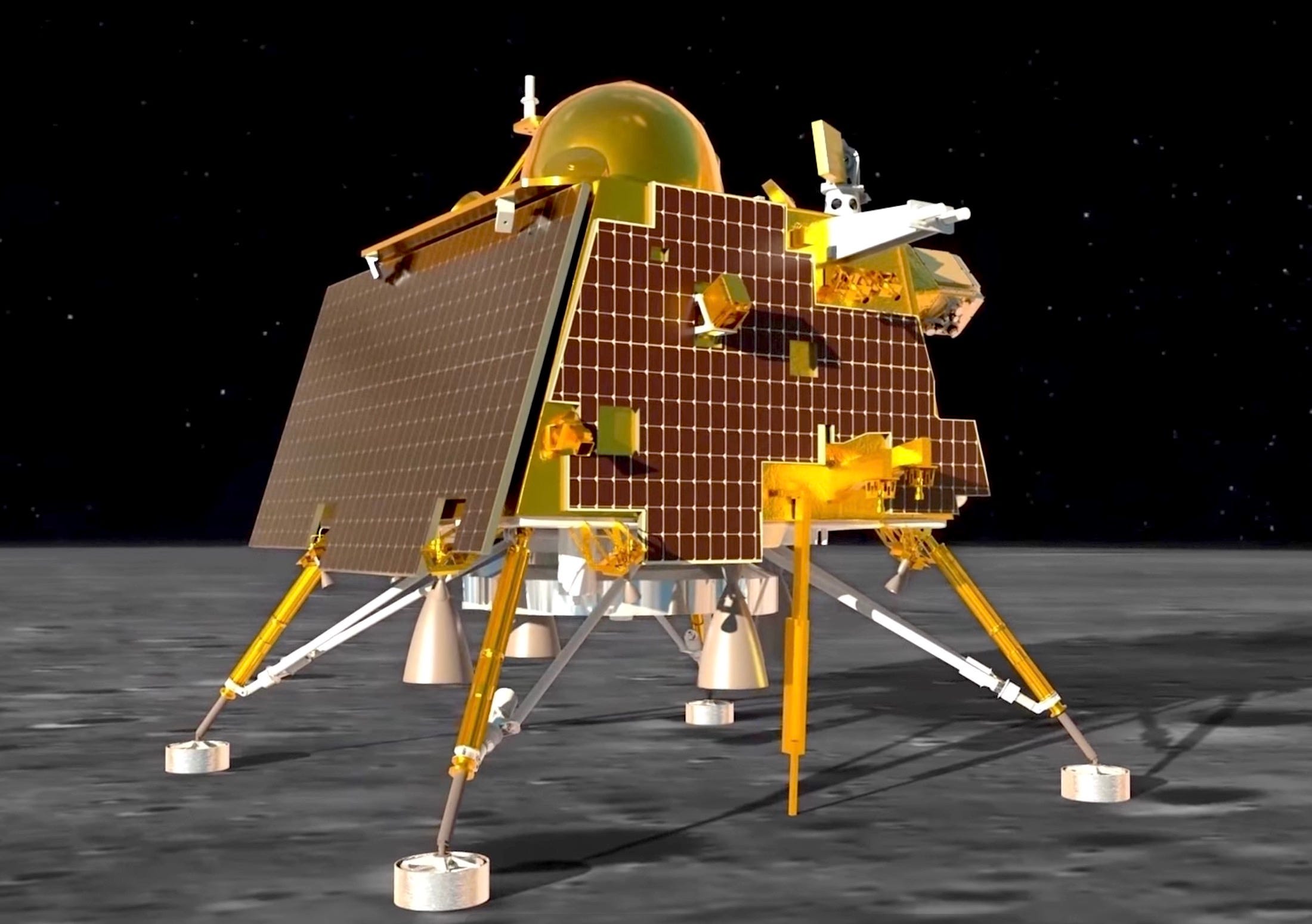Will Chandrayaan 3 hop after landing?
Sep 4, 2023 edit: It hopped!

India’s Chandrayaan 3 lander is on its way to the Moon as we speak, aiming for a graceful touchdown near the lunar south pole on August 23. In a pre-launch interview, popular Indian YouTuber Gareeb Scientist asked an interesting question to ISRO Chief S. Somanath: can Chandrayaan 3 hop after its primary mission of one lunar day (14 Earth days) is accomplished?
Somanath’s response was that while it’s not currently planned, it can be done in principle by uplinking a suitable new program for the lander’s inertial and navigation systems, which should ideally be functional at that point. While a hop would be pretty neat, and allow studying rocket plume effects on lunar soil, I’m certain mission operators will ultimately reject any such action after consideration. The reason has to do with a NASA lander that jumped on the Moon in 1967.
NASA’s Surveyor 6 spacecraft hopped a week after its landing to relocate a few meters away. This was part of an experiment to discern the physical properties and behavior of the lunar soil underneath based on exactly how the lander’s engine plumes affected it. But in the process of hopping, the sensor head of the onboard Alpha Scattering Experiment got flipped on its side. What was supposed to measure the lunar soil’s composition was stuck gathering background radiation data for the rest of the mission. Surveyor’s deployment mechanism wasn’t designed to reel in the sensor head and redeploy it as and when needed, showing an oversight in design and mission procedures built around it.
In Chandrayaan 3’s case, three of the four lander instruments need to be deployed: the seismometer, the thermal probe, and the plasma experiment. Based on publicly available information, the lander has no mechanisms to safely reel back all these instruments and redeploy them. Even if there was, a hop is out of the question as the valuable science to be gained from any of these experiments would far outweigh the benefits of a demonstrative lunar jump that could compromise not just the functioning of the instruments but potentially other lander hardware due to dust blowback. Separately, there’s also the undesirable matter of the rover ramp needing to be pulled back into the lander before a hop.
As we mount increasingly challenging missions to our Moon this decade and next, the case of Surveyor 6 serves as another reminder that we should avoid past mistakes.
Aside: Of course, hardware specifically designed to hop on the Moon is fascinating. For example, Intuitive Machines’ NASA-funded small Micro-Nova robot aims to hop five times during the company’s second Moon mission in 2023 as part of NASA’s CLPS program. ESA is funding the LEAP mission concept wherein a versatile four-legged robot can hop to explore some of the most challenging terrains on the Moon, starting with the geologically rich Aristarchus, a landing region highly desired by scientists but one also difficult to access. The LEAP team aims for a launch on ESA’s upcoming European Large Logistic Lander by end of decade or early next, with prototype testing ongoing on Earth in testbeds that simulate lunar terrain.
→ Browse the Blog | About | Donate ♡
